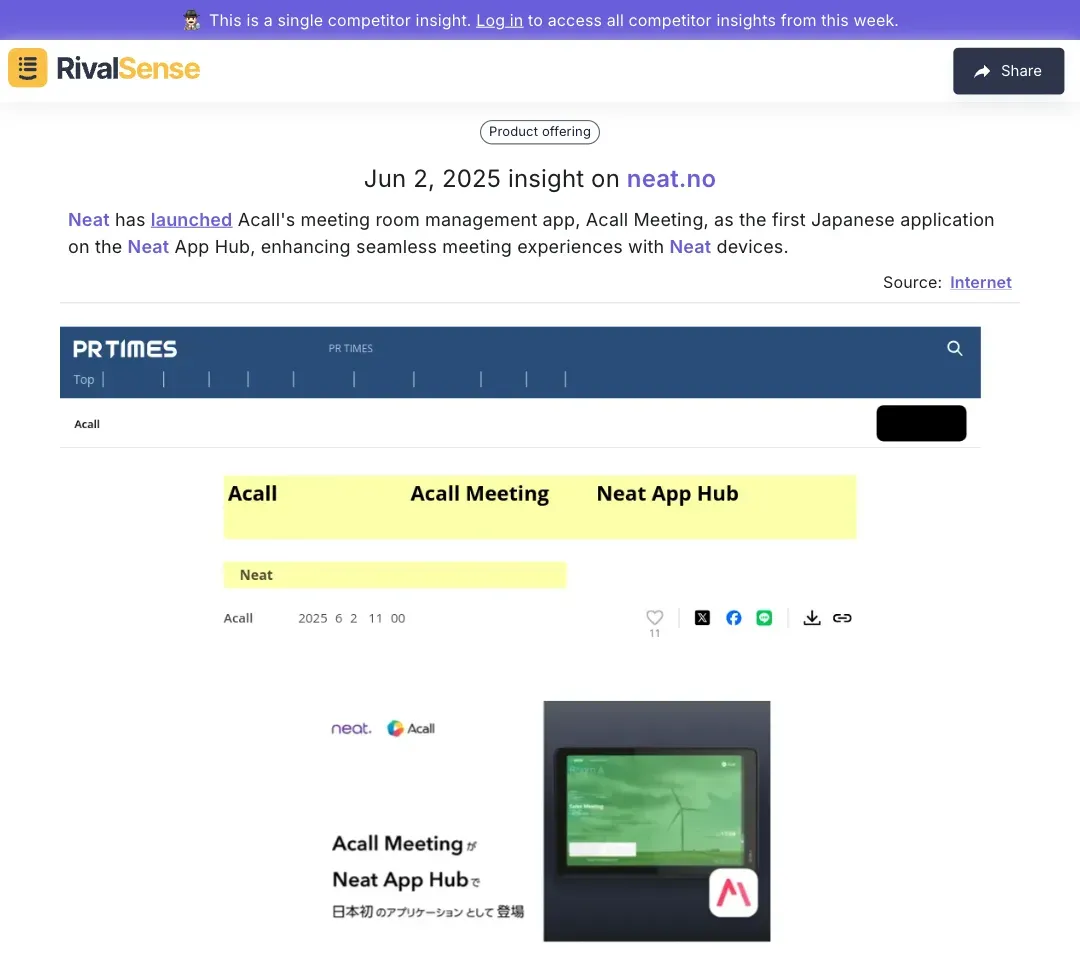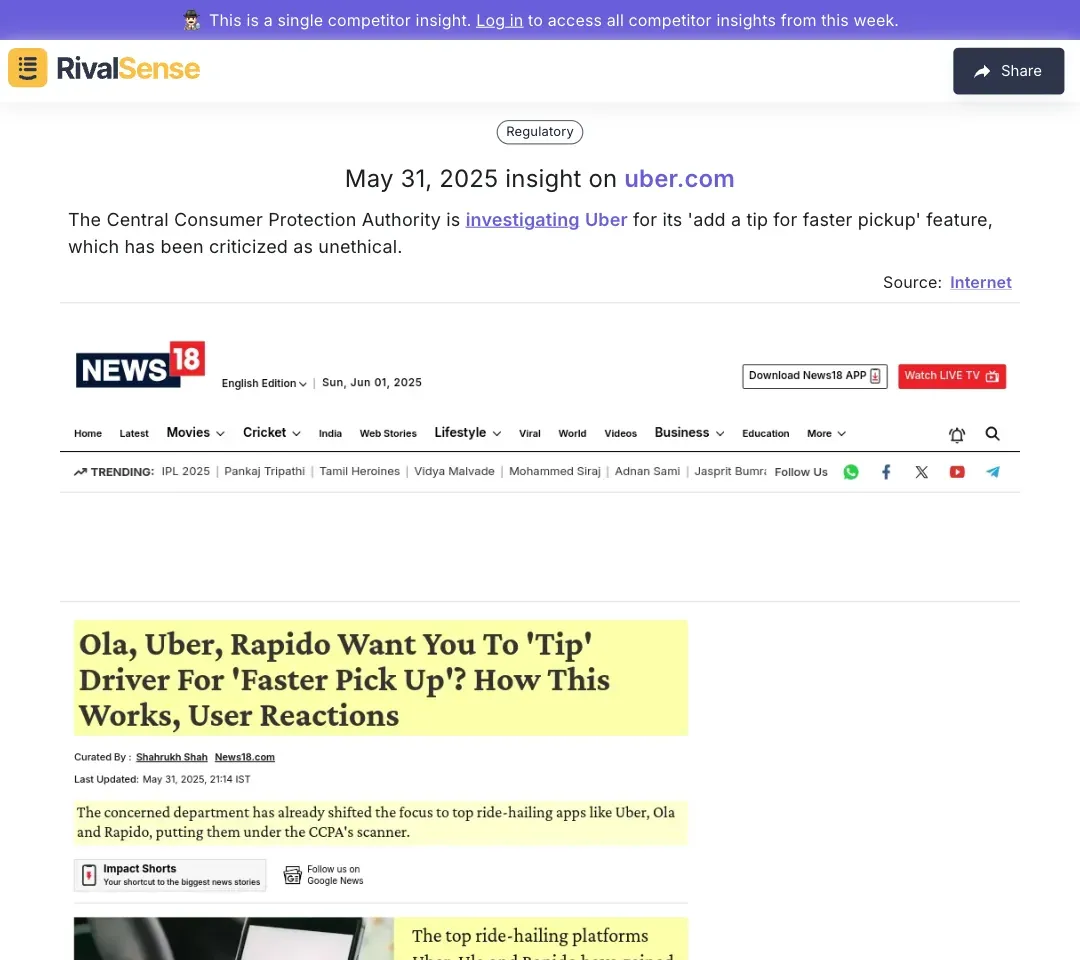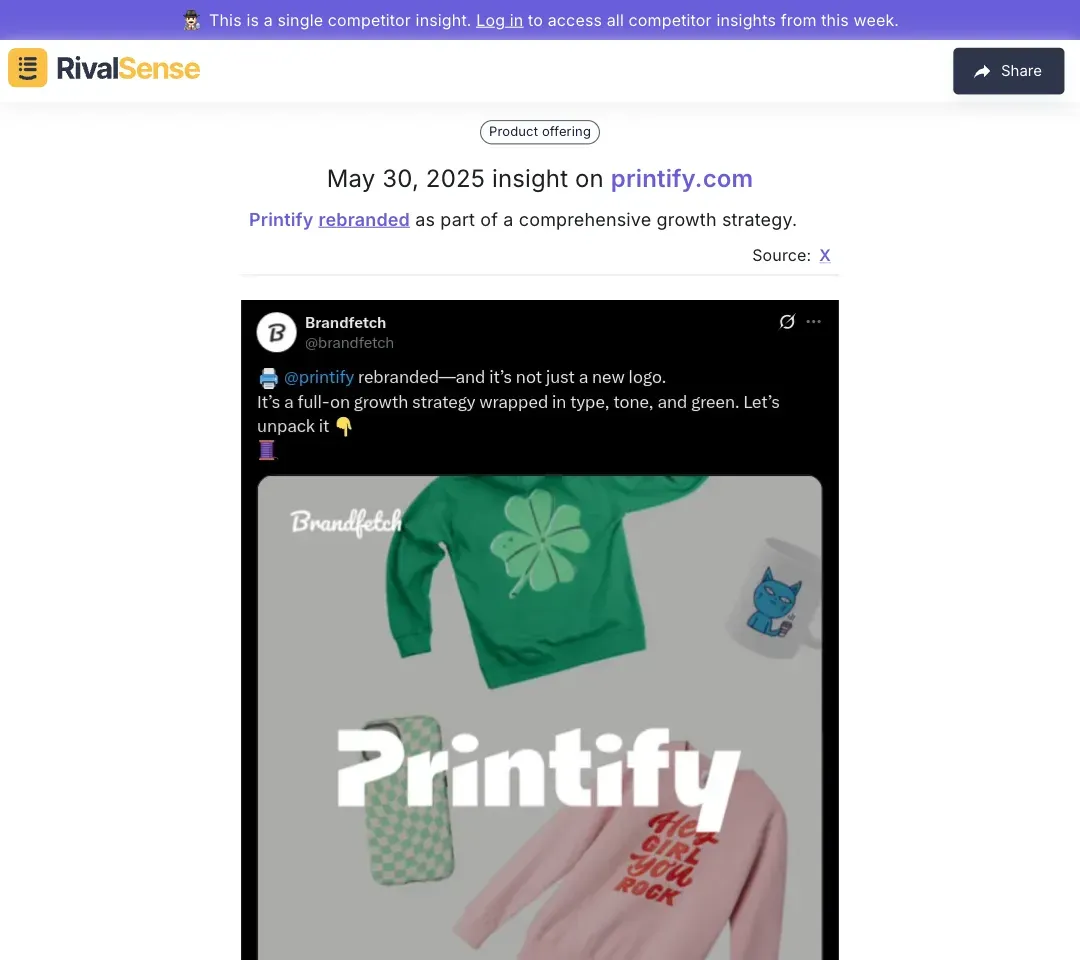Crafting a Market Intelligence Framework: A Step-by-Step Guide for Business Leaders
In today's fast-paced business environment, staying ahead requires more than intuition—it demands a structured approach to gathering and analyzing market intelligence. A well-defined Market Intelligence Framework empowers your business to make informed decisions, anticipate trends, and outmaneuver competitors. Below, we break down building an effective framework with actionable steps and practical tips.
What is a Market Intelligence Framework?
A Market Intelligence Framework is a systematic approach to collecting, analyzing, and leveraging data about your industry, competitors, and customers. This structured methodology helps transform raw information into actionable insights, enabling businesses to navigate complexities with confidence.
Why You Need a Market Intelligence Framework
- Competitive Edge: Monitor competitor moves like product launches or pricing changes to stay proactive.
- Informed Decision-Making: Base strategies on data rather than assumptions for better outcomes.
- Risk Mitigation: Identify regulatory or market threats early to adapt swiftly.
- Customer Insights: Understand evolving preferences to refine offerings.
Steps to Build Your Market Intelligence Framework
1. Define Your Objectives
Align intelligence goals with business priorities—whether tracking competitors or spotting trends. Clear objectives prevent data overload and focus resources.
- Tip: Start by asking: "What critical decisions need intelligence support?"
- Checklist:
- Identify key business questions
- Prioritize intelligence focus areas
2. Identify Data Sources
Diverse sources yield richer insights. Combine primary research (surveys) with secondary sources like news, regulatory filings, and social media.
- Practical Advice: Cast a wide net—include niche forums and patent databases.
- Tool Suggestion: Platforms like RivalSense automate tracking across 80+ sources, delivering weekly competitor reports.
3. Collect and Organize Data
Centralize information for accessibility. Tag data by themes (e.g., "competitor pricing") to simplify analysis.
- Tip: Automate repetitive collection tasks to save time.
- Checklist:
- Implement automated data capture
- Categorize by relevance (competitors/trends)
4. Analyze the Data
Transform data into insights by identifying patterns and anomalies. Contextualize findings against your performance.
- Practical Advice: Use frameworks like SWOT to uncover strategic implications.
- Tool Suggestion: Visual dashboards highlight trends quickly.
5. Share Insights Across Teams
Democratize intelligence to drive alignment. Tailor reports for departments—e.g., product teams need competitor updates, while sales needs pricing shifts.
- Tip: Hold monthly intelligence briefings.
- Checklist:
- Schedule cross-functional syncs
- Customize reports per team
6. Act on the Insights
Turn intelligence into strategy. A competitor's price drop might warrant a promotion; a regulatory shift could require compliance checks.
- Practical Advice: Assign clear owners for insight-driven actions.
- Tool Suggestion: RivalSense alerts on real-time pricing changes for agile responses.
7. Review and Refine
Continuously optimize your framework. Measure how intelligence-driven decisions impact KPIs like revenue or market share.
- Tip: Audit data sources quarterly for relevance.
- Checklist:
- Track decision outcomes
- Update collection methods
Types of Market Intelligence Frameworks
Different goals require tailored approaches. Understanding framework types helps match methodology to business needs.
- Competitor-Centric Framework:
Tracks rival activities like product launches or management changes.- Example: RivalSense monitors competitor moves across 80+ sources.
- Customer-Centric Framework:
Focuses on behavior and preferences through surveys and feedback. - Market Trend Framework:
Analyzes industry shifts like regulations or tech disruptions.
Real-World Intelligence Impact
These examples show how diverse insights drive strategy:
-
Competitor Product Launches:
Neat launched Acall's meeting room management app as the first Japanese application on its App Hub, enhancing meeting experiences.

Why it matters: Spotting such launches reveals partnership opportunities or feature gaps in your offerings. -
Regulatory Risks:
Uber faces investigation for its 'tip for faster pickup' feature, deemed unethical by authorities.

Why it matters: Monitoring investigations helps preempt compliance issues and protect brand reputation. -
Strategic Rebranding:
Printify rebranded to align with its growth strategy and market positioning.

Why it matters: Tracking rebrands signals market pivots, informing your own positioning decisions.
Practical Tips for Success
- Automate Tracking: Tools like RivalSense handle real-time monitoring, freeing your team for analysis.
- Stay Agile: Revisit objectives quarterly as markets evolve.
- Collaborate: Involve sales, product, and leadership to maximize insight value.
Conclusion
A robust Market Intelligence Framework turns uncertainty into advantage. By systematizing data collection, analysis, and action, you’ll navigate markets with clarity and confidence.
Ready to transform your intelligence efforts?
👉 Try RivalSense for free and get your first competitor report today: https://rivalsense.co/
📚 Read more
👉 Decoding Competitor Sales Tactics in B2B Dropshipping
👉 How De'Longhi's New Espresso Model Spurred Competitor Innovation
👉 Competitor Insight Templates: Strategic Response Frameworks
👉 5 Common Roofing Software Mistakes to Avoid for Better Customer Segmentation
👉 Data-Driven Insights on Competitor Partnerships & Client Strategies
